-
Posts
3,304 -
Joined
-
Last visited
Content Type
Profiles
Forums
Gallery
Events
Posts posted by Hubac's Historian
-
-
-
Thank you to everyone for your likes, comments and looking in.
So, it is a bit of a process, but it appears that the effort to insert a filler of .030 styrene sheet between moulded halves of the 36lb guns, of the lower battery, will be worth it. The uptick in heft is definitely discernible. Initially, the bore at the muzzle is a little oblong, but a little judicious reaming takes care of that:
The cascabel has been ground away to seat nicely in the 3/16” holes that I drilled into poplar stock for my dummy carriages. This past week, I made 1” blocks from this stock that were painted black and drilled at the appropriate height for the lower and middle batteries.
For added strength, I will later add a steel (sewing) pin into the back of each barrel, in order to give the glue a little something extra to hold onto. I will probably also shave away the trunnions, as they no longer are needed, and would only be distracting, if seen. The idea behind dummy carriages was that I wanted to be able to easily install the guns toward the end of the build, and I was hoping to avoid the 5-piece carriage assemblies until the upper decks.
Well, that should keep me busy for a while!
-
-
It sounds, to me, like the best way to proceed. You will have to decide, though, whether you intend to represent the six stern lights, plus a door opening in the center.
You could - if you were set on the idea of wanting to build a full-hull model - work within the confines of the Heller kit architecture. If you stuck to Heller’s scaling, when you recreate the window/door openings, that will result in two stern lights to either side of the central doorway. In my opinion, though, this would be a less than ideal approximation.
The other consideration is that the profusion of so many large figurative sculptures demands a wider platform than the Heller architecture can provide; the stock kit of Soleil Royal seems impossibly tall and too narrow, as it is.
Nevertheless, You could simply trace the stock outline of the stern and lower transom, and then attempt to fit scaled-down spacing that will allow for the seven openings that are required. I suspect, though, that the impression this creates will be even less ideal than the five openings option. That’s a quick enough thing to lay out, though, just to see for yourself.
My thinking is that to really do this - one would be well served by chopping away the lower hull and increasing the breadth of the hull, at the bow. I don’t think it’s really feasible to add more than the 5/8”, overall, as I did at the bow of my build; at that dimension, I had to do some tricky heat bending to get the extensions to mate, without simultaneously spoiling the rounding of the bow. Those extensions, though, make it possible to set your stern transom at whatever width is necessary to accommodate your new window/door layout. I needed 1/2”+, but you could probably muster 3/4” without anything seeming exaggerated.
In the end, you will have to go to considerable lengths to produce a good scale impression of the RL, from the SR kit. This kind of modification build is (much) less about strict adherence to the actual scale and dimension of the original RL, as it is a balance between what is close enough to correct that it strikes an overall impression of being right; this is all a highly scientific approach that I call “Fudgery”; cheat a little here, get that exactly right, subtract that entirely, and then add back all of these missing details. And, then, VOILA - a reasonable facsimile of the Royal Louis of 1668.
This raises the question, of course, as to where you will obtain the necessary scrap hull to make these extensions. Would you purchase a third SR kit, or would you sacrifice the St. Philippe project for the sake of Royal Louis?
Sometimes you can find partially built kits on EBAY for a reasonable price. Something to consider, anyway.
- CaptainSteve, EJ_L and mtaylor
-
 3
3
-
My guess is that carvings were treenailed because they could be carved and blended into the sculpture
- EJ_L, mtaylor and CaptainSteve
-
 3
3
-
Just remarkable work, Mike!
- Stuntflyer, FrankWouts, Martin W and 2 others
-
 5
5
-
-
-
My only guess at the rationale for it would be that more nails would minimize movement between layers of the lid - stabilizing it, much the same way that glue does for alternating layers of plywood. You would definitely want the lids to close securely, but open easily enough. Maybe this construction facilitated that.
-
Hey Guys,
With regard to the Vasa lid - the shiny appearance of the lid lining is the result of the last step of PEG preservation; museum conservators used hot air guns to melt away excess PEG from every wooden surface of the ship. The resulting shiny patina of the linings matches that of the rest of the ship.
I presume that the linings are made of the same oak as the hull planking, albeit in a thinner scantling. When I saw the Vasa, around 2000, I don’t recall noticing anything unusual about the lid linings. To my eye, metalic linings would have seemed unusual. I am far from an expert, though. These are just my observations.
The other consideration is that the individual plank seams on the Vasa lid lining are clearly visible; if they were sheathed in metal, it stands to reason that they would not be.
- CaptainSteve, mtaylor and shipmodel
-
 3
3
-
I am doubtful of that, Dan. I’m not sure you would have the practical means of hammering out uniform sheets of copper, for this purpose, at this early stage in the 17th C.
I think what you are looking at is the patinated surface of the preserved lid liner, after it’s 20-year poly-ethylene glycol bath. If they were copper, or had there been copper there, I think you would see evidence of ver-de-gris staining of the lids and surounding timber.
- shipmodel and CaptainSteve
-
 2
2
-
A reasonable question, Dan. I’m not sure that I have an answer to the issues of compression/drilling, etc. Yet a field of lid-liner nails appears to be a documented detail of 17th C. practice.
the Vasa:
And the modern reconstruction of Batavia:
I’m sure if I search my image database, I could pull up a few VDV, the Elder portraits that show the detail in the 1650’s.
Perhaps Lemineur takes artistic license, but maybe not as much as it may seem.
If anything, I am surely under-representing them.
- shipmodel, mtaylor and CaptainSteve
-
 3
3
-
I think a few things are worth considering for this approach.
First, I think it would be most advantageous - for the subsequent thinning and shaping of the keel and stem - if the visible portions of the keel, as well as those portions where the plastic hull joins it, are made from solid wood.
You will never be able to convincingly conceal the fact that you have carved through the outer layers of plywood to form your new keel shape; not without a mess of epoxy fillers, anyway.
A solid wood keel can be carved back cleanly, and the longest stretch of it, beneath the hull, can even be reduced on a router table, if you were to make a sled for the hull that maintains a parallel relationship between the keel and fence. However many passes it takes to achieve this safely, and then turn the sled, and repeat on the other side. The drawback of this approach is that the stem and sternpost will still have to be carved by hand. This is an advantage, though, if you intend to taper the stem and sternpost as eould have been done in full scale.
My suggestion would be to edge glue solid stock to plywood of an appropriate thickness - which would, in effect, serve as a sort of central bulkhead former, up to the main deck level. This approach would even enable you to mimic the appropriate joinery of where the stem and sternpost meet the keel.
Now, speaking to the problem of the rise of the stern deadwood - I think your cut line needs to be as close to the flat as you can make it.
If you have access to one, the easiest way to achieve this would probably be to sand it off with a machine table belt sander. You could also probably rig up another kind of router sled and get even better results.
Now, even if you are a little bit off with the deadwood - as long as you have very carefully removed the keel from the rounded portions of the hull, you should end up with a nicely mating joint to your new keel former for approx. 75% of the hull.
Any discrepancies along the stern deadwood could, perhaps, be backed by sections of your expansion-foam plug. A resin-based epoxy filler could then fill-in any discrepancies and be faired back into the hull form. If there are big gaps, you will have to be careful to select a filler that does not kick off with too much heat, or you must take extra time to fill the gap in stages.
- CaptainSteve, mtaylor and EJ_L
-
 3
3
-
I have certainly sacrificed scale accuracy for detail, and some sense of depth, on the carvings. Little by little, though, technique improves. I appreciate the thought, EJ.
- EJ_L, shipmodel, CaptainSteve and 1 other
-
 4
4
-
-
-
-
Awesome scratch work, so far! What bonding epoxy are you using?
- EJ_L, J11, popeye the sailor and 1 other
-
 4
4
-
-
-
I appreciate the kind words, Dan!
Well, Brooklyn is certainly a feast for both the eyes and belly - and, increasingly, populated by concrete canyons. Affordability, though, is a relative concept. In either case, we are thrilled to be there.
Now, the presence of fleur-de-lis on the inside of the port lids would have been a pretty sure detail. Whether they were merely painted, or existed as full relief carvings is a matter open to debate. Here are a series of contemporary portraits that, in close-up, seem to suggest relief carvings. Granted, the enlargements are not clear:
In the early years of the First Marine, and particularly for the prestige ships of the Premier Rang Extraordinaire, it would seem likely that no expense would be spared. As the French navy evolved toward the Second Marine - 1693 and thereafter - the likelihood that these ornaments may have been painted-on seems plausible, as well; apparently, this is how Mr. Lemineur chose to represent his monograph models of the St. Philippe. Although, in fairness, they may be low-relief trompe l’eoil.
Would a re-constructed SR, in 1689, still have had carved port ornaments? I can’t say for sure, however, I don’t think there is enough contemporary evidence to definitively say that they weren’t carved.
Soleil Royal was the greatest of the prestige ships, so I chose to go with carvings. Of course, this is also a convenient excuse for applying more of the ornaments that I worked hard to create and chase, after casting.
At the very least the Vasa, though a good deal earlier, provides concrete evidence for lid carvings.
- shipmodel, J11, GeorgeKapas and 3 others
-
 6
6
-
Well, the move to Brooklyn has kept me busy - consolidating and replacing old furniture that doesn’t work in the new (smaller) space. Lately, though, I’ve been able to make some progress on the model.
The first order of business was to create a protective build-box for the model, for the next how-ever-many-years it takes to build her. The model, itself, will be temporarily mounted to a removable platten (the unpainted plywood). I was able to make pretty good use of an Albert Brenet print of Soleil Royal (Thank you, Neko 😀) in action at the Battle de Beveziers, in order to dress the box up a bit:
Here are a few shots of the lower hull with the distress washing complete on the port side, and base-coating underway on the starboard side:
I am also completing the modification/detailing of the gunport lids. While I won’t paint them, install the lanyard rings or place them on the ship until much later, this is one of those good, small-work projects that I can carry around and work on in my downtime:
While I continue with the painting, at home, I will soon begin my next small-work project, which will be an attempt to scale-up the kit gun barrels, a bit, for the lower and middle batteries.
- shipmodel, CaptainSteve, druxey and 7 others
-
 10
10
-
- EJ_L, CaptainSteve and J11
-
 3
3
-



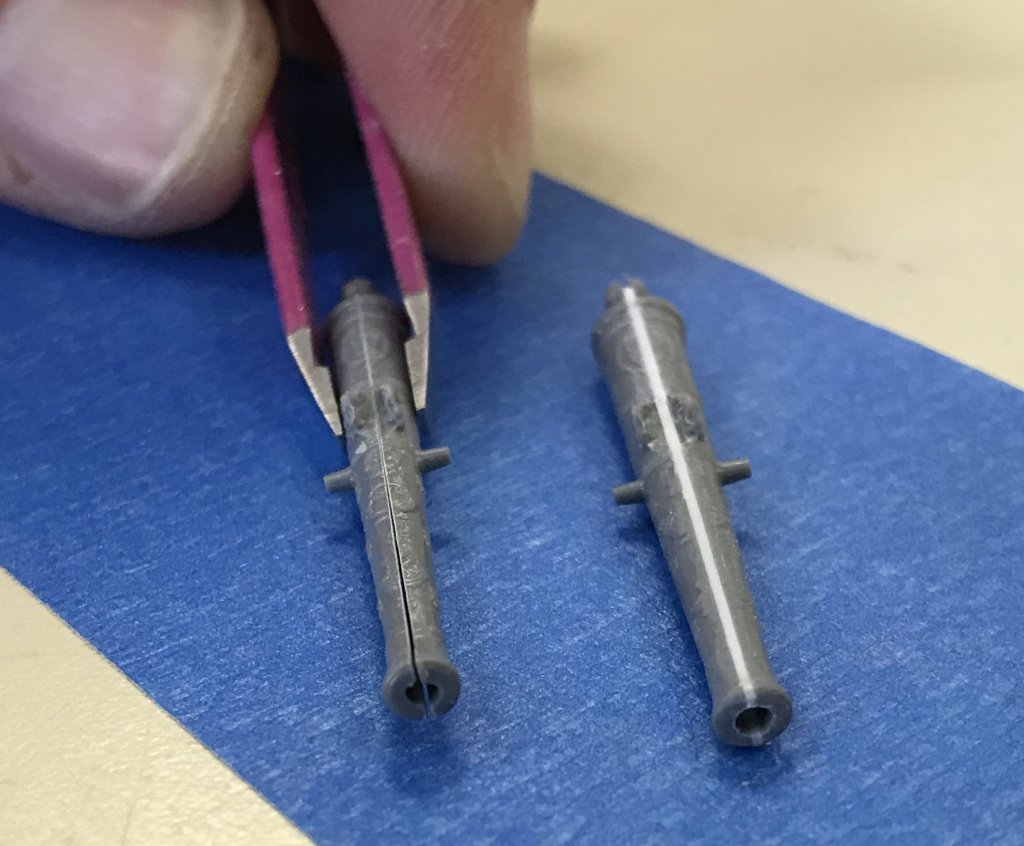
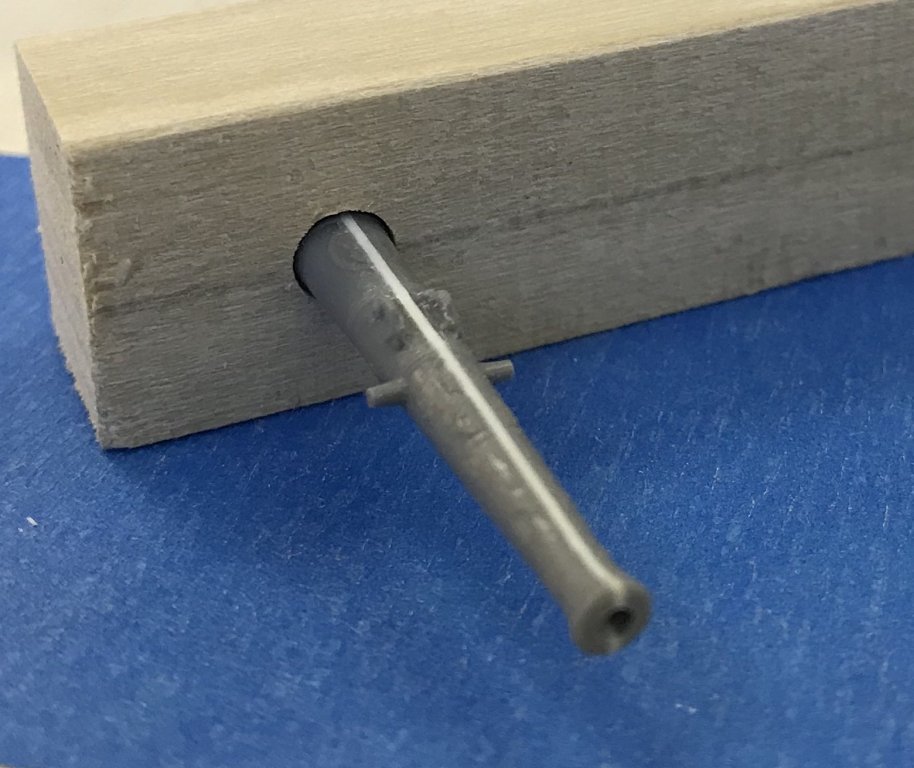
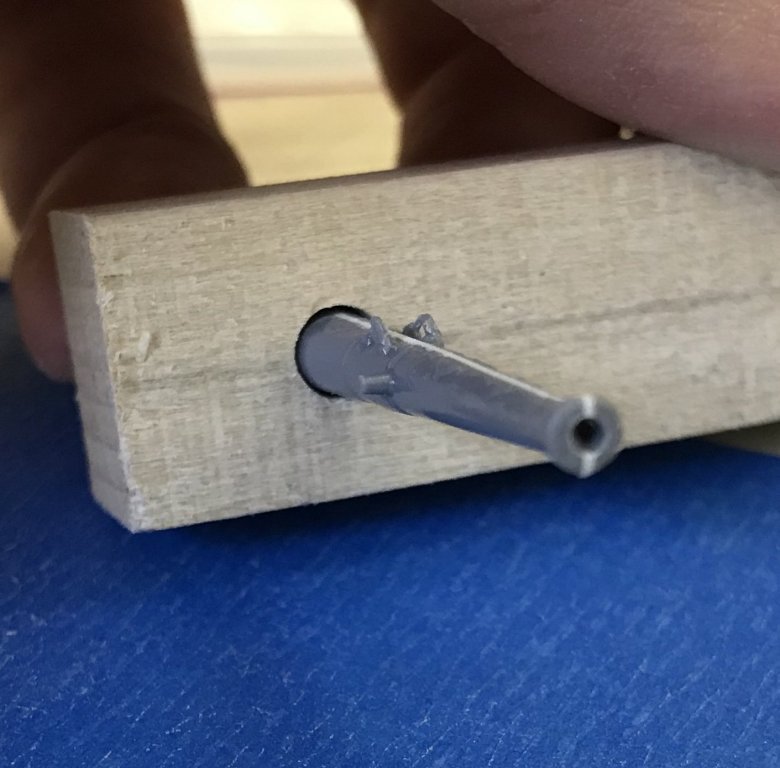
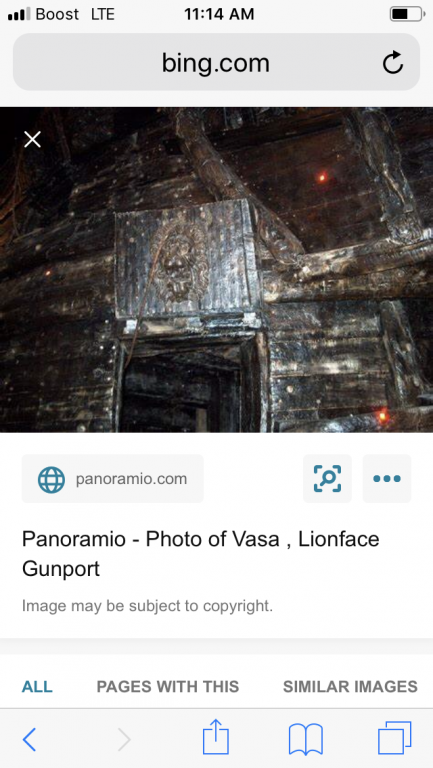
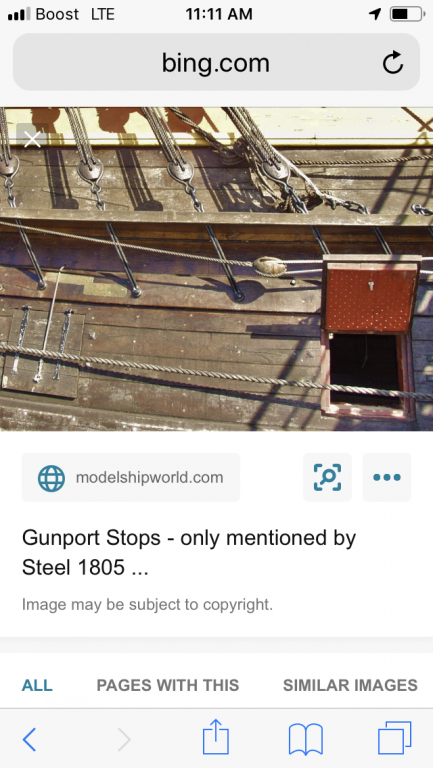
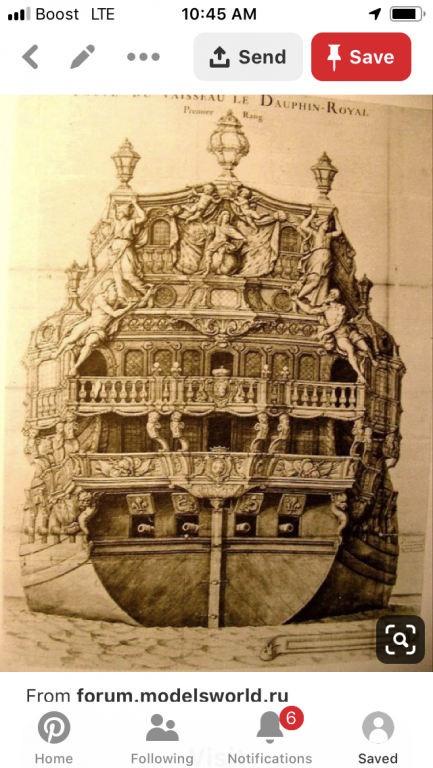
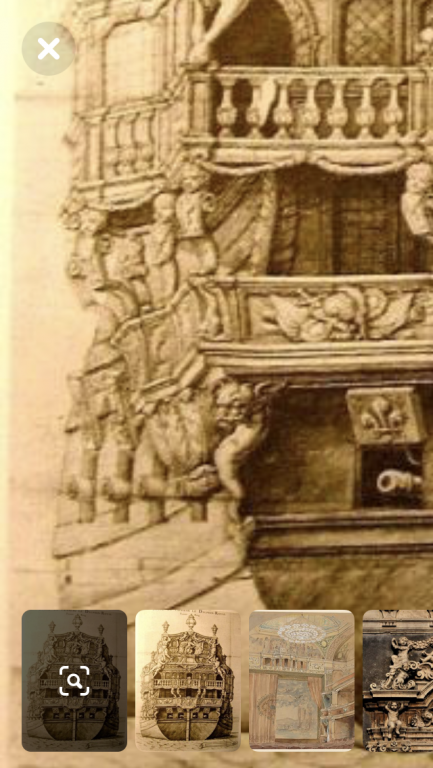
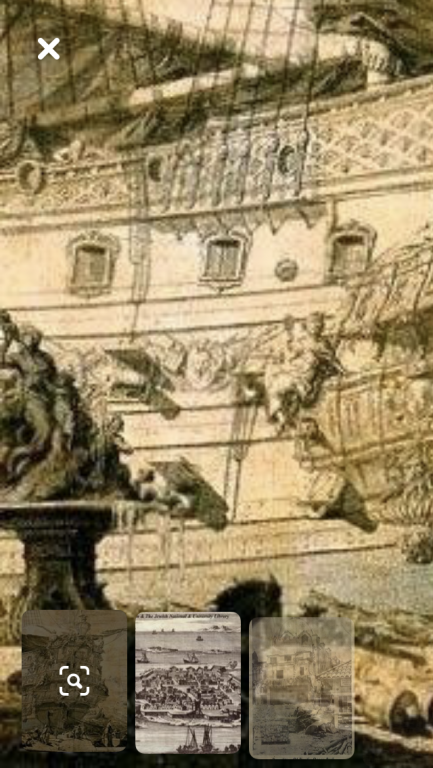
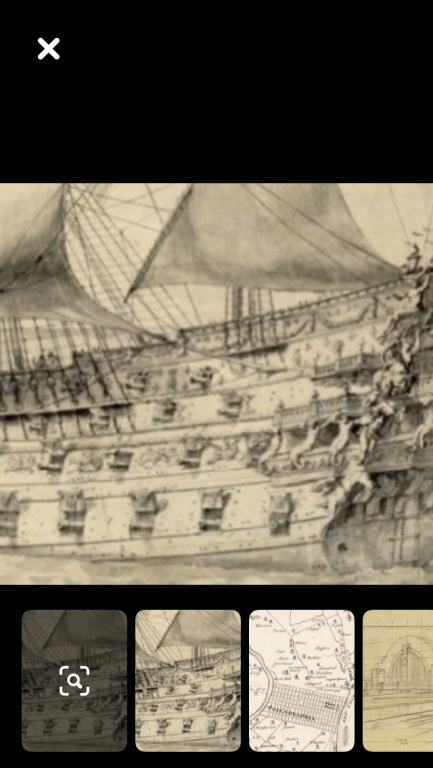
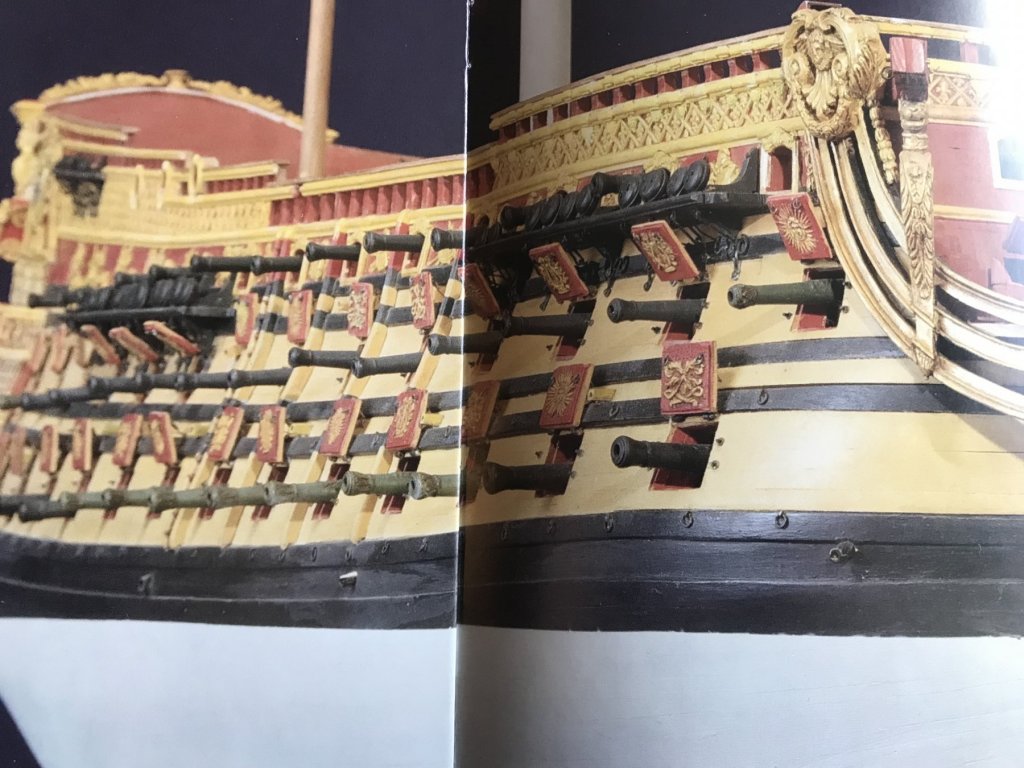
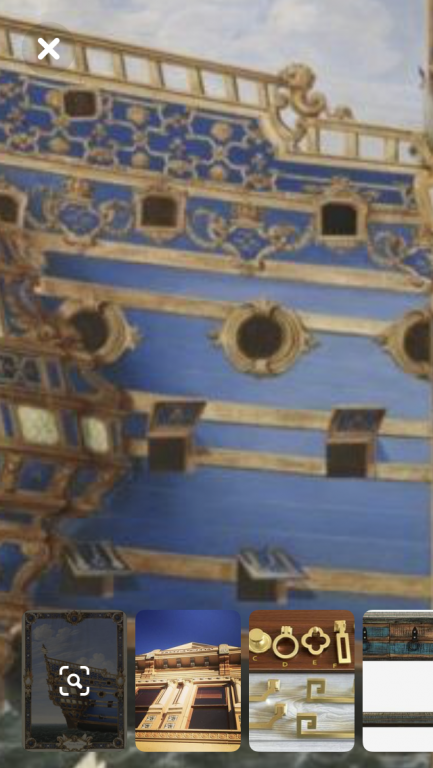
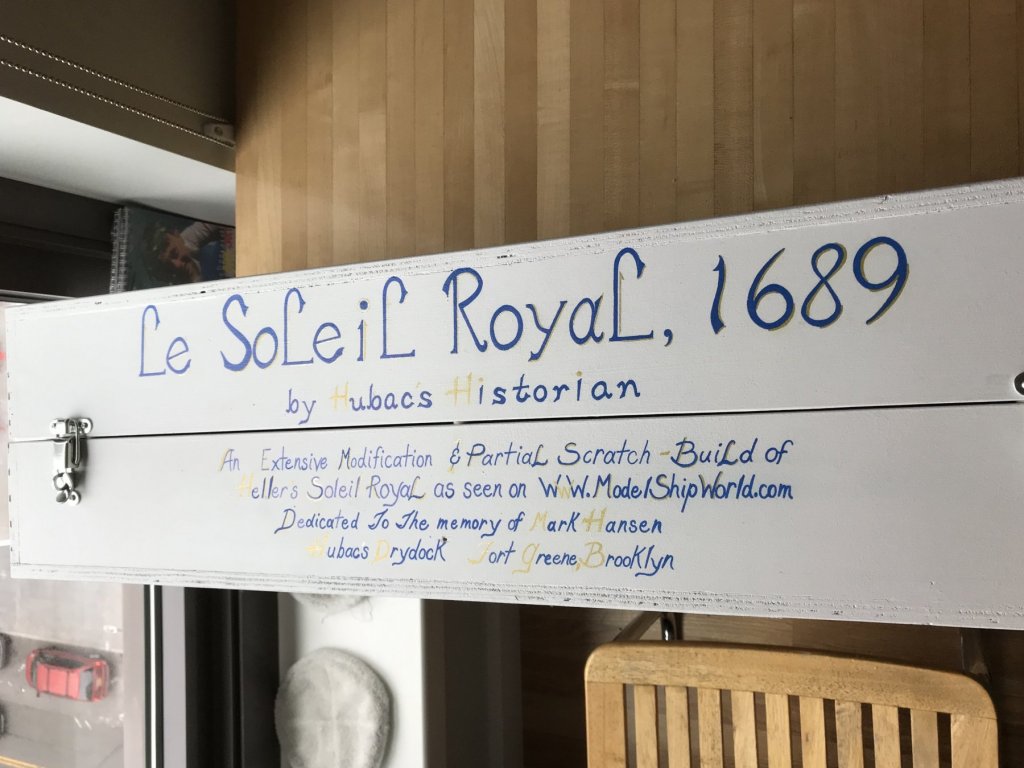
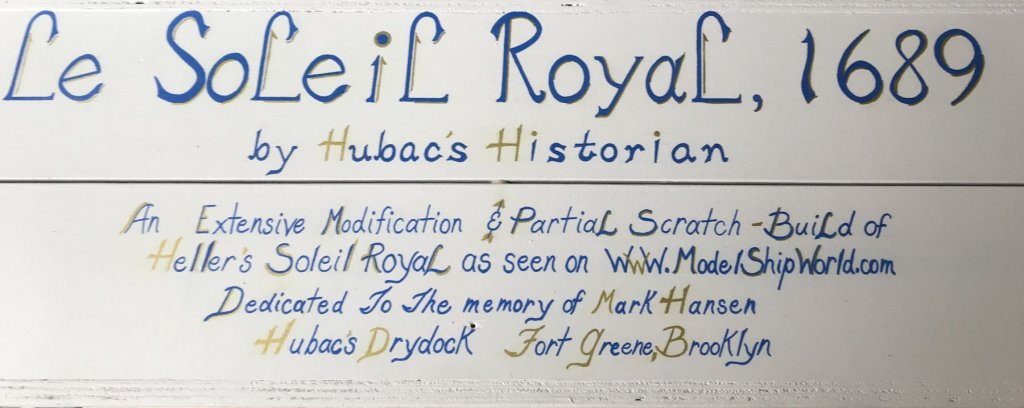
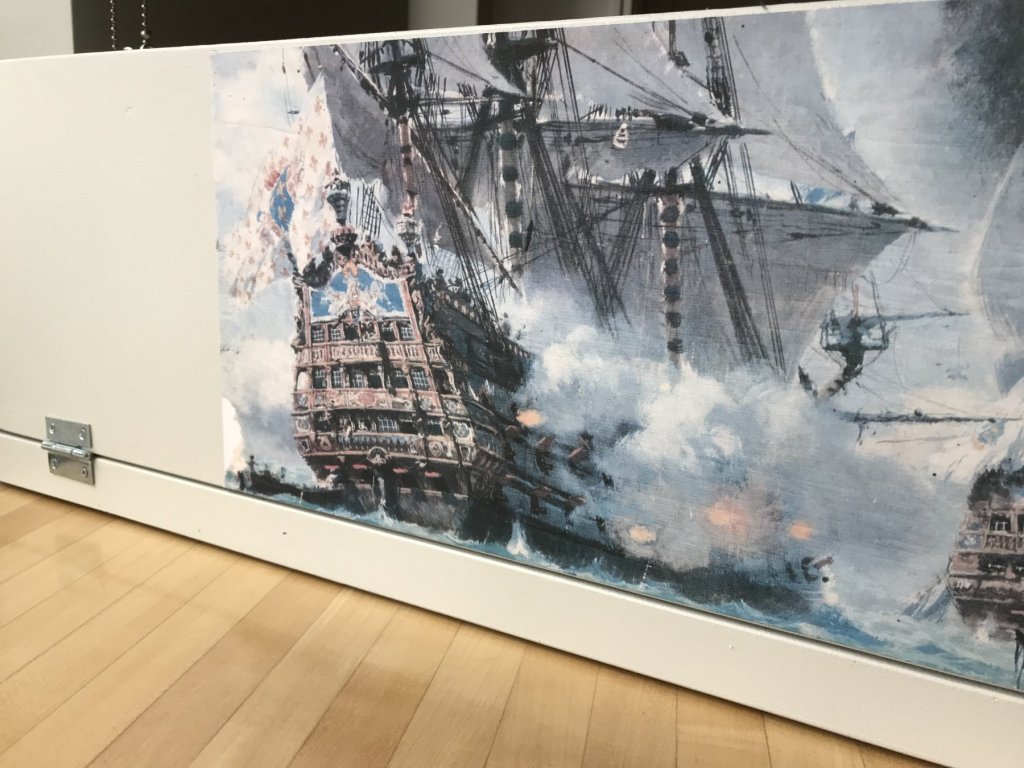
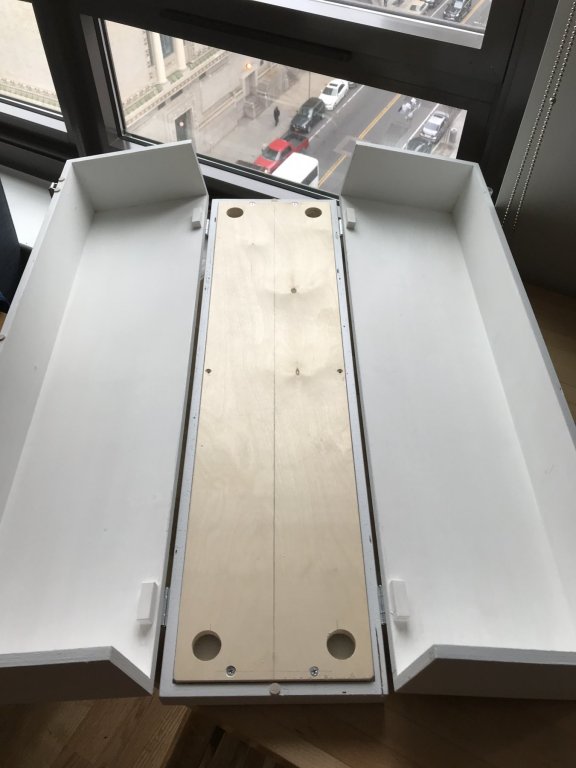
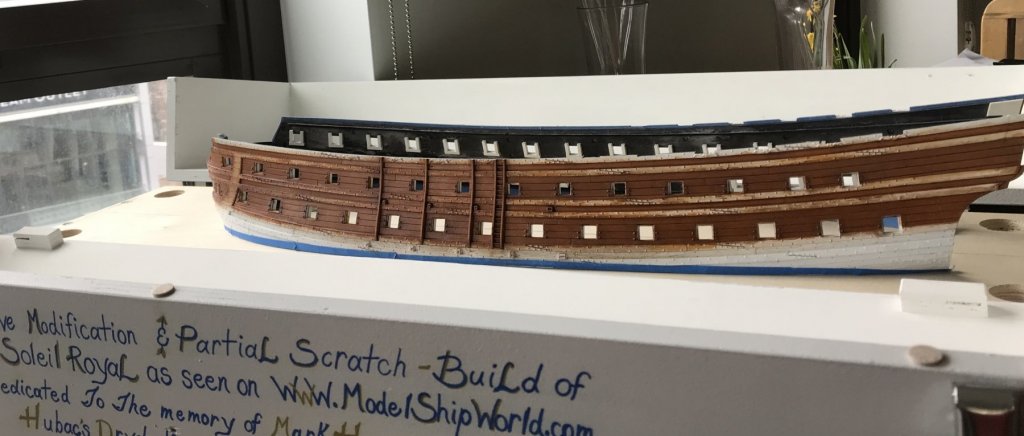
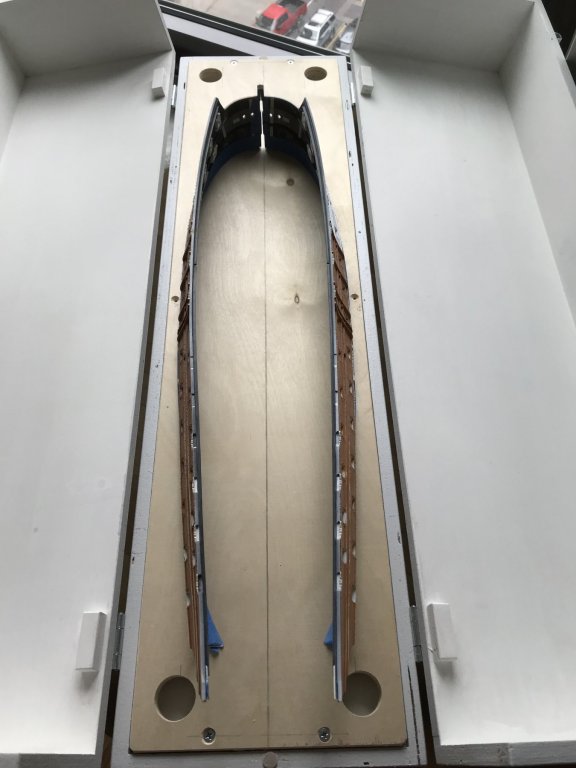
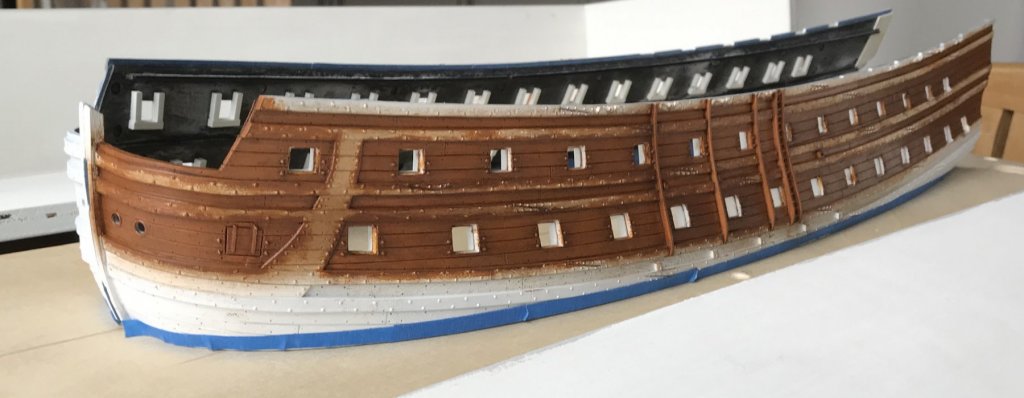
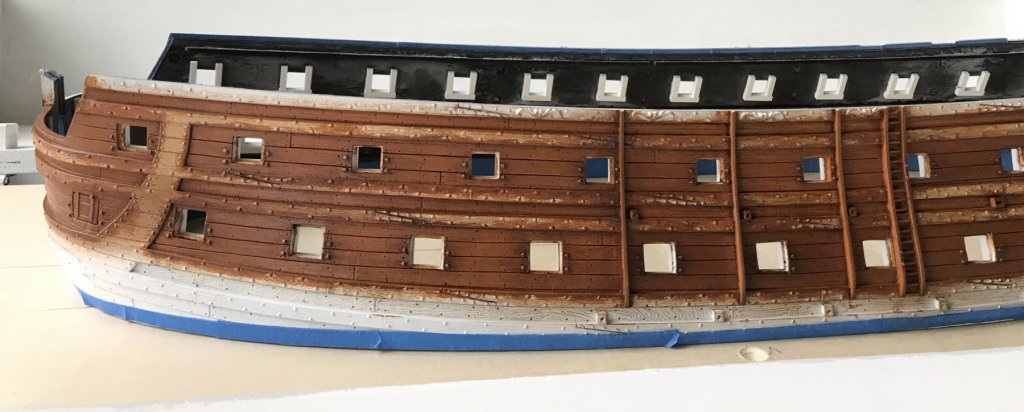
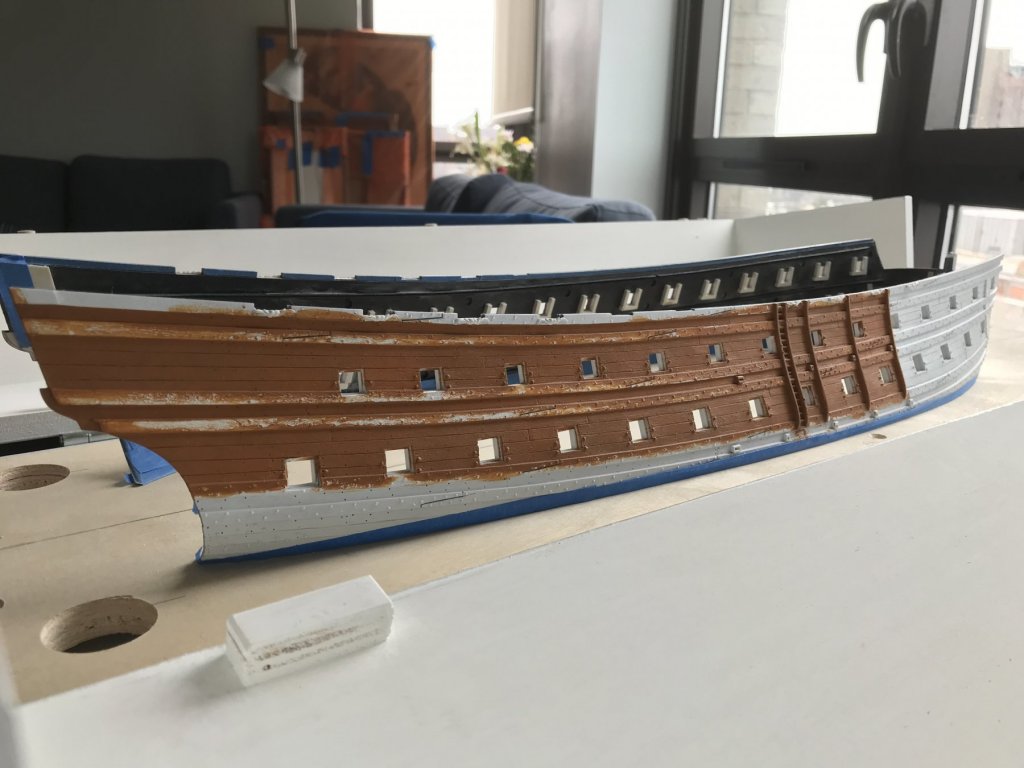
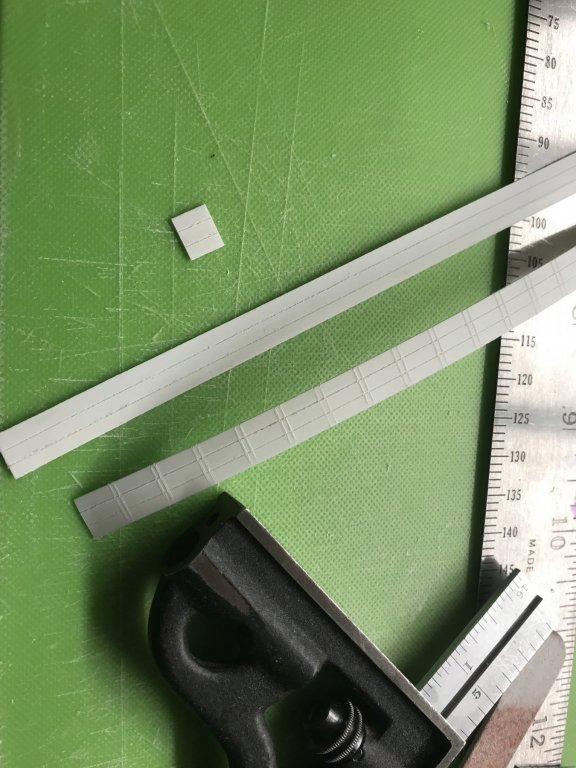
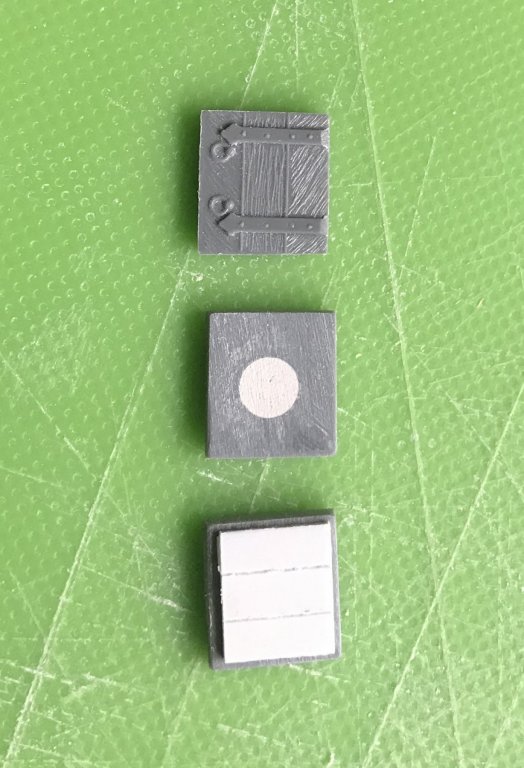

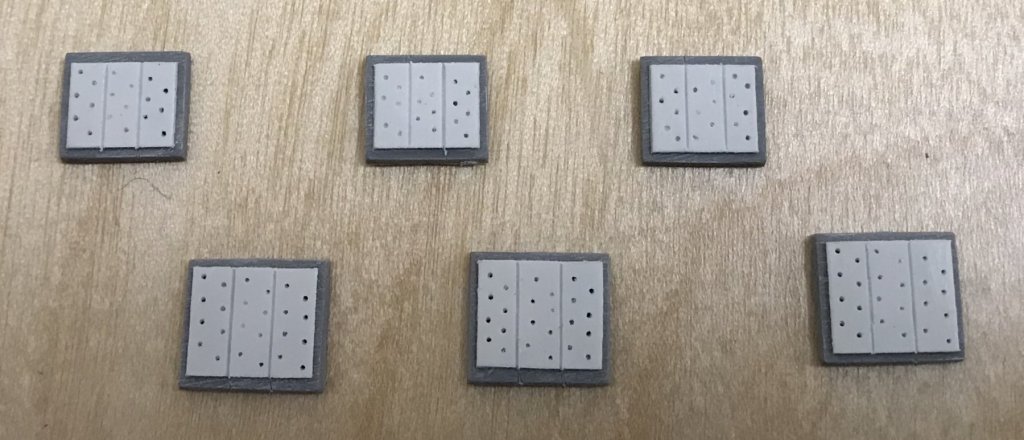
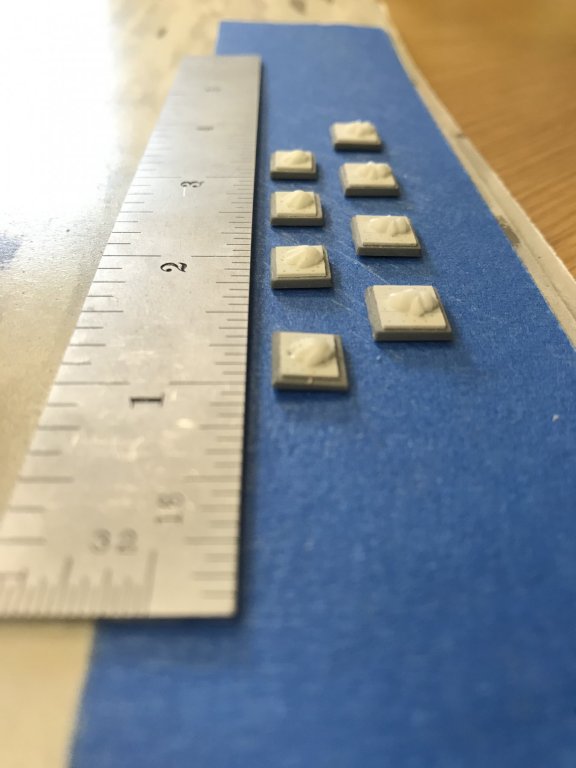
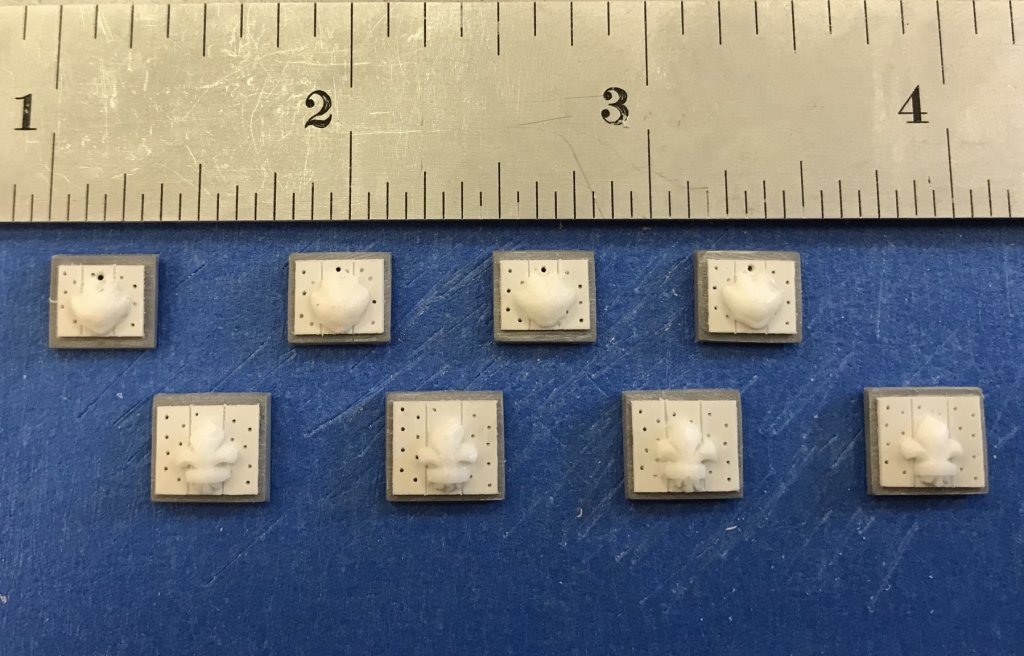
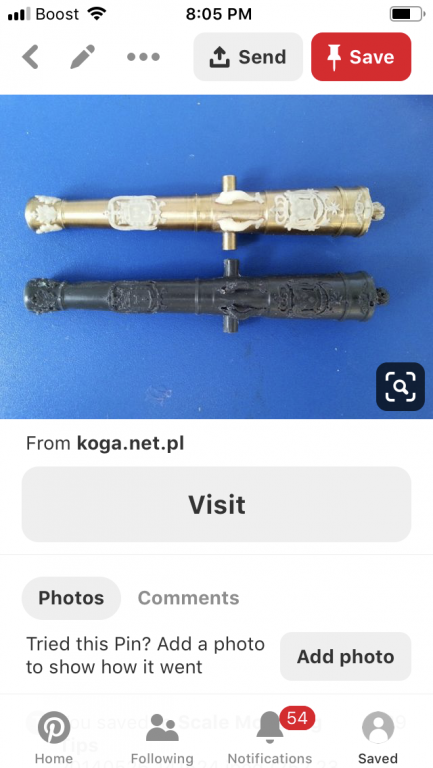
Soleil Royal by Hubac's Historian - Heller - An Extensive Modification and Partial Scratch-Build
in - Kit build logs for subjects built from 1501 - 1750
Posted
As I often do, whenever I’m passing through, I stopped at The STRAND today.
I can’t overstate the joy I experienced, after I started leafing through this book:
No Index mentions of Soleil Royal, but a whole series for the Battle of Barfleur. And, then I got to page 114:
WAIT!! WHAT’s THAT?!! Is that the portrait I’ve been searching for the past year?
WHY, YES IT IS!!!! Still grainy AF, but about twice the caption size as I first found in the Robinson annotated volume of VDV drawings.
Now - I will readily admit that this better picture still does not confirm my theories, but it does more strongly suggest that I am on the right path.
And at least now I know where this portrait resided in 1980:
The Parker Gallery. Maybe, by some stroke of luck, it’s still there. If not, they may be able to point me in the right direction to where it is now. If they can’t, or they aren’t permitted to say whose private collection it resides in, then perhaps, they still have quality archival photographs of the painting!
So, the trail is hot again! I told you I’d find it out there, somewhere, TD! I thought it would be the internet’s tentacles that would bring her to me, but for now, maybe it’s good old print carrying the day.